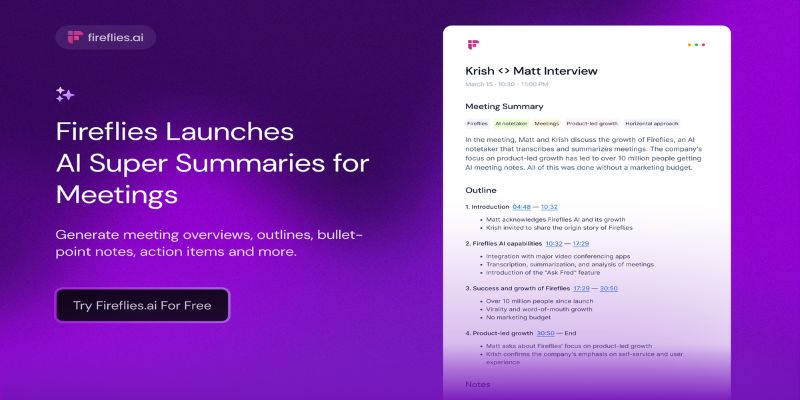It's easy to assume ChatGPT works best with any kind of message you throw at it, but the truth is, how you write the prompt plays a big role in what you get back. A few small tweaks can completely change the quality of the response. On the other hand, a few common habits can hold back the results, making them either vague, repetitive, or not even close to what you need. If you've ever found yourself frustrated with an answer that didn't quite hit the mark, there's a chance the issue started with the way the prompt was written.
Let’s look at six common mistakes that trip people up and how to avoid each one. You’ll probably recognize a few right away.
6 ChatGPT Prompt Mistakes to Avoid
Asking for “Any” or “All” Instead of Being Specific
Many people tend to begin prompts with phrases like “Tell me everything about...” or “Give me all the details on...” That sets the bar way too high for a single answer and usually leads to a bloated, shallow response that skips over the real depth you’re looking for.
For example, instead of saying, “Tell me everything about SEO,” it would be better to ask, “What are three on-page SEO techniques for small business websites?” Being specific helps narrow the focus, so the answer is clearer and more practical. The model will respond with depth where it matters, rather than skimming the surface of a huge topic.
Trying to make the prompt “open-ended” often leads to vague replies. Narrowing your focus upfront solves that instantly.
Forgetting to Mention the Format You Want
You might want a list. Or a table. Or a casual explanation, like you're chatting with a friend. But unless you say it, the response might default to whatever feels standard, which could be dry or too formal for your needs.

Leaving the format open leads to a lot of guessing. If you say, “Explain the pros and cons of solar energy,” there’s no clue whether you’re looking for a bullet-point list, a paragraph, or a comparison chart. Instead, try “List the top three pros and cons of solar energy in bullet points.” That small change gives structure to the response and saves you from having to reformat or ask again.
It's not about asking for something fancy. Just say what kind of response would be most useful—quick summary, expanded explanation, table, or whatever suits the situation.
Overloading the Prompt With Too Many Instructions
It’s tempting to cram everything into one message, hoping that a longer prompt will cover all the bases. The opposite usually happens: when you load a prompt with five tasks, long context, and conflicting requests, it becomes harder for the model to figure out what you want most.
Something like “Write me a blog post in a casual tone, around 800 words, with SEO in mind, covering benefits, challenges, FAQs, and include a conclusion, and use simple words, and make sure it's unique, and avoid repetition” ends up confusing the structure. You may still get something close, but it won’t be as sharp or useful as you'd expect.
Break big requests into smaller parts. Start with the tone and format. Then build up to content. You’ll usually get a better result by layering it gradually rather than dropping everything in one block.
Leaving Out the Context
Even the best prompt falls flat without a bit of background. A question like “Can you write an article on leadership?” can go in a hundred directions: corporate leadership? School leadership? Leadership during a crisis?
You don’t need a huge paragraph to give context. A short line like “This is for a newsletter for high school teachers” changes everything. Suddenly, the tone, examples, and focus will match your actual audience.
Lack of context leads to vague answers that feel “off,” even if the wording is technically right. If the result doesn’t sound like what you had in mind, there’s a good chance you didn’t frame it properly.
Even one or two extra words can reshape the entire output.
Asking for Style Without Giving a Sample
People often say “Write it in a witty tone” or “Make it sound like Hemingway”—but without giving a sample, those instructions are too vague. What sounds “witty” to one person might seem try-hard to another. And styles like Hemingway, academic, or corporate all mean different things to different people.

If tone matters, it helps to paste in a few lines from something you like. You can say, “Write this article in the same tone as the following sample,” and then drop in a short excerpt. Even 100 words are enough for the model to get the feel and rhythm.
Without that, it’ll do its best guess, but you may end up with writing that feels flat or off-brand. Style is personal, and the model isn't a mind reader—it works better with examples.
Repeating Instructions That Cancel Each Other Out
This happens when people try to be extra careful. They’ll write something like “Make this informal but also professional. Keep it casual but academic. Make it short but detailed.” It sounds safe, but it sends mixed signals that the model has to resolve somehow, often in a way you didn't mean.
Trying to combine too many opposite traits waters down the result. Instead of trying to cover every possibility, decide on one direction. If it needs to sound simple, then let it be simple. If it should sound expert-level, commit to that. The more focused your tone and length instructions are, the more natural the final response feels.
Being "safe" often leads to dull, generic output. Being clear, even if that means being bold with your instruction, gets better results.
Final Thoughts
Prompt mistakes aren’t always obvious at first. Most people only notice them when the answers start to feel robotic, repetitive, or not quite right. The good news is, once you recognize these habits, they’re easy to avoid. You don’t need to overthink it—just be clear, focused, and realistic about what you’re asking. A small shift in the way you phrase a request can turn a flat answer into one that sounds thoughtful, accurate, and exactly what you wanted.











